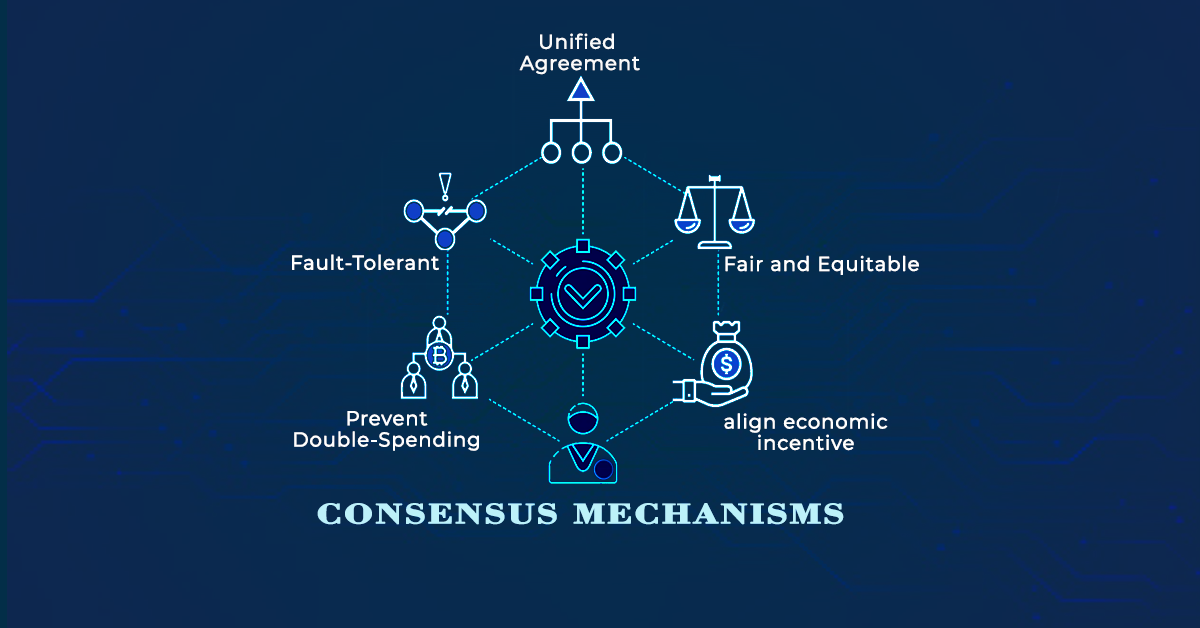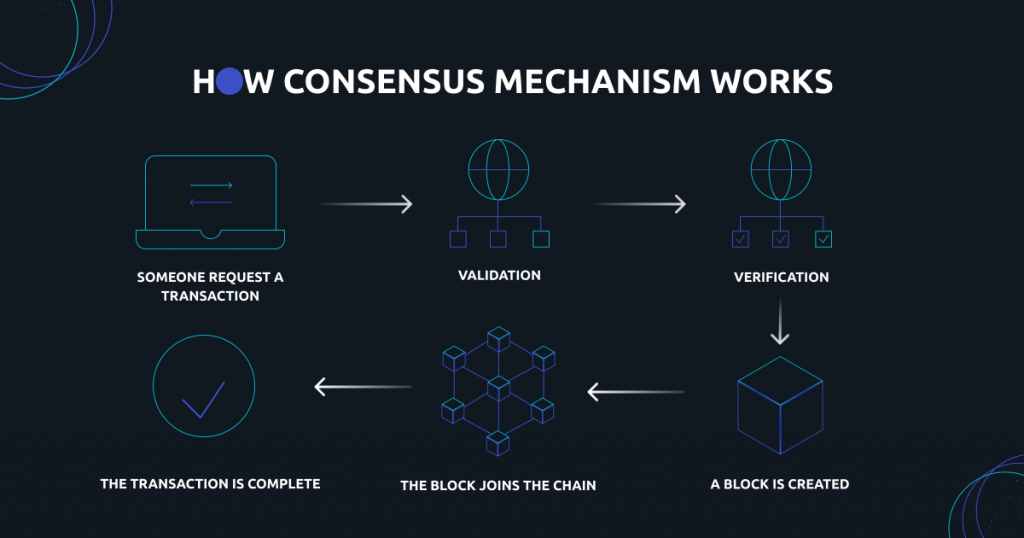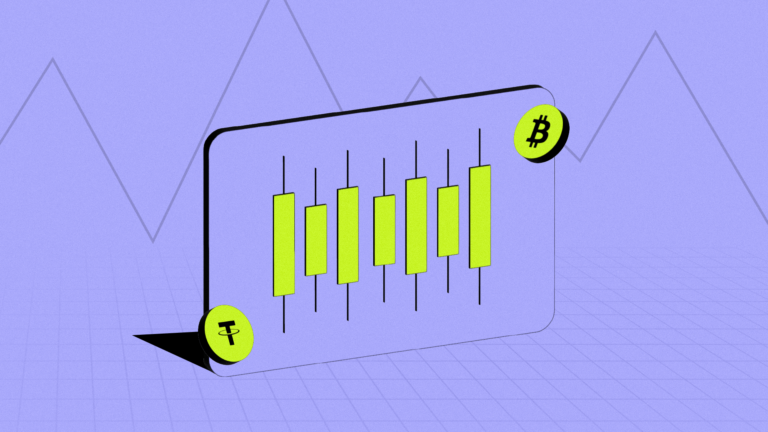Blockchain technology is the backbone of the cryptocurrency world. It enables secure and transparent transactions between parties without the need for intermediaries like banks or financial institutions. However, the reliability of blockchain depends on its ability to reach a consensus among the nodes in the network. That’s where the Consensus Mechanism comes into play.
Consensus mechanisms are the fundamental building blocks of blockchain technology. They are the set of rules and procedures that enable a network of nodes to agree on the current state of the blockchain. Without consensus mechanisms, the blockchain would be vulnerable to attacks from malicious actors. And the trust that is essential to its functioning would be eroded.
In this blog post, we will take a closer look at consensus mechanisms and their importance in the blockchain world. In addition, we’ll also look at how consensus mechanisms work and what are the different types of consensus mechanisms. By the end of this blog, you’ll have a deeper understanding of one of the most critical aspects of the cryptocurrency ecosystem.
What is Consensus Mechanism?
In a traditional centralized system, there is a central authority that maintains the integrity of the system. However, in a decentralized system like blockchain, there is no central authority. Instead, the network is made up of multiple nodes, and each node has a copy of the blockchain.
To maintain the integrity of the network and ensure that all nodes agree on the state of the blockchain, a consensus mechanism is necessary. A Consensus Mechanism is a set of rules that allow the nodes on the network to agree on the state of the blockchain.

In other words, consensus mechanisms allow for the creation of a distributed and trustless network. A network where all nodes can trust the state of the blockchain without having to rely on a central authority. The consensus mechanism is responsible for validating transactions and adding them to the blockchain. In addition, it ensures that all nodes on the network are in agreement about the state of the blockchain.
Without a consensus mechanism, it would be possible for malicious actors to manipulate the blockchain and falsify transactions. Consensus mechanisms make it difficult for malicious actors to take control of the network. This makes blockchain a secure and reliable technology.
In short, a consensus mechanism is a fundamental component of blockchain technology that powers cryptocurrencies. It ensures the security and reliability of the network by maintaining the integrity of the blockchain. And ensuring that all nodes on the network agree on its state.
How Does a Consensus Mechanism Work?
In order for a blockchain to work, there must be a way for nodes to agree on the state of the network. Consensus mechanisms achieve this by requiring nodes to solve complex mathematical problems or by requiring them to stake a certain amount of cryptocurrency.

Once a node has successfully solved the problem or staked the required amount, it is allowed to add transactions to the blockchain. Other nodes on the network then validate the transaction. And if they agree that it is valid, they add it to their copy of the blockchain.
However, there are several ways in which a consensus mechanism can achieve this, and the most popular ones are Proof of Work (PoW) and Proof of Stake (PoS), Delegated Proof of Stake (DPoS), Proof of Authority (PoA), and Byzantine Fault Tolerance (BFT).
This indicates that the choice of consensus mechanism depends on the specific use case and the trade-offs that the network operators are willing to make.
Types of Consensus Mechanisms
As previously said, several blockchains use a variety of mechanisms to attain consensus in today’s crypto sector. Here are the four most popular consensus practices.
- Proof of Work (PoW): It is the most well-known consensus mechanism, used by Bitcoin and many other cryptocurrencies. PoW requires nodes to solve complex mathematical problems to validate transactions and add them to the blockchain. The first node to solve the problem is rewarded with newly minted cryptocurrency.
This mechanism is resource-intensive and requires significant amounts of computing power and electricity to operate, which has led to concerns about its environmental impact. Examples: Bitcoin (BTC), Litecoin (LTC), & Dogecoin (DOGE).
- Proof of Stake (PoS): It requires nodes to stake a certain amount of cryptocurrency to validate transactions and add them to the blockchain. The probability of a node being chosen to validate a block is proportional to the amount of cryptocurrency it has staked.
This mechanism is more energy-efficient than PoW because it doesn’t require nodes to perform complex computations. However, there are concerns about the centralization of PoS because nodes with more cryptocurrency have a greater chance of being selected to validate a block. Examples: Ethereum (ETH), Cardano (ADA), & Algorand (ALGO).
- Delegated Proof of Stake (DPoS): It is similar to PoS, but instead of all nodes staking, they elect a group of delegates who are responsible for validating transactions and adding them to the blockchain. The delegates are chosen by the community through a voting process, and they are rewarded with cryptocurrency for their work.
This mechanism is more energy-efficient than PoW and PoS and can handle more transactions per second. However, there are concerns about the centralization of DPoS because a small group of delegates has a lot of power over the network. Examples: EOS, Tron (TRX), & BitShares (BTS).
-
Proof of Authority (PoA):
It is used in private blockchains and requires nodes to be authorized to validate transactions and add them to the blockchain. The nodes are typically known and trusted entities, such as banks or governments.
This mechanism is more energy-efficient than PoW and PoS and can handle more transactions per second. However, it’s less decentralized than other consensus mechanisms because the nodes are centralized and can control the network. Examples: VeChain (VET), JP Morgan (JPMCoin), & Ethereum Kovan Testnet.
In short, there are several types of consensus mechanisms, each with its own advantages and disadvantages. But the choice of consensus mechanism depends on the specific needs of the network, such as security, scalability, and energy efficiency.
Why are Consensus Mechanisms Important in Blockchain?
Consensus mechanisms are an essential part of blockchain technology as they provide a decentralized method for validating transactions and maintaining the integrity of the network.
Without consensus mechanisms, it would be possible for malicious actors to manipulate the blockchain by falsifying transactions, creating new blocks, or altering existing blocks. This would undermine the security and trust of the entire network. Consensus mechanisms make it difficult for any single entity to manipulate the network and provide a fair and transparent method for validating transactions.

Consensus mechanisms also play a crucial role in the scalability and efficiency of blockchain networks. In traditional financial systems, centralized authorities such as banks or governments are responsible for verifying transactions. This centralization results in bottlenecks, delays, and high costs.
In contrast, blockchain networks use consensus mechanisms to validate transactions in a decentralized manner, which makes the process more efficient and cost-effective. This implies that consensus mechanisms are essential to the functioning of blockchain networks.
Conclusion
Consensus mechanisms are a crucial component of blockchain technology that powers cryptocurrencies. They ensure the security and reliability of the network by ensuring that all nodes are in agreement about the state of the blockchain.
Meanwhile, there are several types of consensus mechanisms, but each has its own set of advantages and disadvantages. This implies that the future of consensus mechanisms is an area of active research, and we can expect to see exciting developments in this area in the coming years.
To know more about the Blockchain Consensus Mechanism, go check out SunCrypto Academy.
Disclaimer: Crypto products and NFTs are unregulated and can be highly risky. There may be no regulatory recourse for any loss from such transactions. All content provided is for informational purposes only, and shall not be relied upon as financial/investment advice. Opinions shared, if any, are only shared for information and education purposes. Although the best efforts have been made to ensure all information is accurate and up to date, occasionally unintended errors or misprints may occur. We recommend you to please do your own research or consult an expert before making any investment decision. You may write to us at [email protected].





